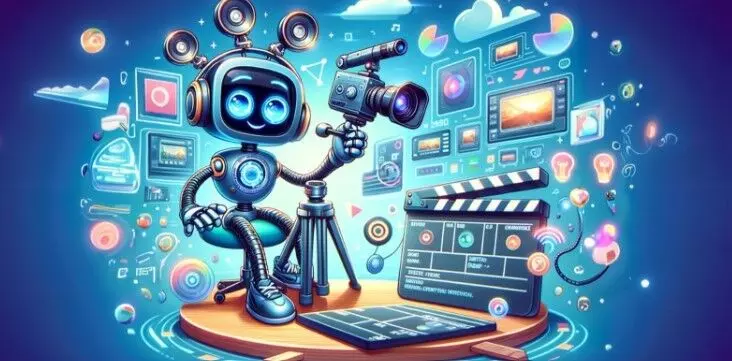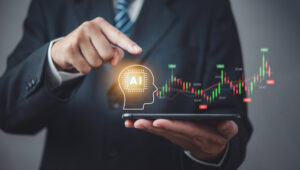In the rapidly evolving world of digital marketing, the ability to generate short ads with AI is revolutionizing how digital creators approach advertising. This innovative technology not only saves time but also enhances creativity, allowing creators to focus on other essential aspects of their campaigns.
With the increasing demand for quick and engaging content, the need to generate short ads with AI has become more significant than ever. This article explores how AI is reshaping the advertising landscape and offers insights into how digital creators can leverage this technology to their advantage.

Understanding AI in Advertising
Artificial Intelligence (AI) has made significant strides in recent years, transforming various industries, including advertising. By analyzing vast amounts of data, AI can create ads that are not only relevant but also highly personalized to target audiences. This capability is invaluable for digital creators aiming to connect with their audience on a deeper level.
What is AI in Advertising?
AI in advertising refers to the use of artificial intelligence technologies to automate and optimize the creation, distribution, and analysis of advertisements. This includes machine learning algorithms that can predict consumer behavior, natural language processing for generating ad copy, and image recognition for visual content creation.
Benefits of Using AI for Short Ads
- Efficiency: AI can quickly generate multiple versions of an ad, allowing creators to test and iterate rapidly.
- Personalization: AI algorithms can tailor ads to specific audience segments, increasing engagement and conversion rates.
- Cost-Effectiveness: By automating aspects of ad creation, AI reduces the need for extensive human labor, lowering costs.
How to Generate Short Ads with AI
Generating short ads with AI involves several steps, each designed to maximize the effectiveness and reach of the advertisement. Here’s a step-by-step guide to get you started:
1. Define Your Objectives
Before diving into ad creation, it’s crucial to define your advertising objectives. What message do you want to convey? Who is your target audience? Answering these questions will guide your ad creation process.
2. Choose the Right AI Tool
There are numerous AI tools available for ad creation, each with unique features and capabilities. Some popular options include tools that specialize in text generation, image creation, and video production. Selecting the right tool depends on your specific needs and goals.
For instance, if you’re interested in AI in video personalization, you might choose a tool that excels in video content creation.
3. Input Your Data
AI tools require data to function effectively. This data can include demographic information, consumer behavior patterns, and previous ad performance metrics. The more data you provide, the better the AI can tailor the ads to your audience.
4. Generate and Test Ads
Once your data is inputted, the AI tool will generate several ad variations. It’s essential to test these ads to determine which version resonates best with your audience. A/B testing is a common method used to evaluate ad performance.
5. Analyze and Optimize
After running your ads, analyze their performance using metrics such as click-through rates, engagement levels, and conversion rates. Use these insights to optimize future ad campaigns.
Examples of AI-Generated Ads
AI has been successfully used to create a variety of ads, ranging from text-based to multimedia. Here are some examples of how AI-generated ads have been employed in different industries:
Text-Based Ads
AI can generate compelling ad copy that captures the essence of a brand. For instance, AI algorithms can create catchy headlines and engaging body text that appeal to specific audience segments.
Image and Video Ads
AI tools can also create visually stunning ads by analyzing trends and consumer preferences. For example, an AI tool might generate a video ad that features popular themes or imagery that resonates with the target audience.
For those interested in exploring how AI can transform video content, AI-created cartoon videos offer a glimpse into the creative possibilities.
The Future of AI in Advertising
The potential of AI in advertising is immense, and its role is only expected to grow in the coming years. As AI technology continues to evolve, digital creators will have even more tools at their disposal to create impactful and engaging ads.
Emerging Trends
Some emerging trends in AI advertising include the use of augmented reality (AR) and virtual reality (VR) to create immersive ad experiences. Additionally, AI is increasingly being used to analyze consumer sentiment and tailor ads accordingly.
Challenges and Considerations
While AI offers numerous benefits, it’s essential to be aware of potential challenges, such as data privacy concerns and the need for ongoing AI training and maintenance. Digital creators must remain vigilant in ensuring ethical AI usage and data security.
Conclusion
In conclusion, the ability to generate short ads with AI offers digital creators a powerful tool for enhancing their advertising strategies. By leveraging AI, creators can produce highly personalized and engaging ads that resonate with their target audience. As AI technology continues to advance, the possibilities for digital advertising are endless.
For more insights into how AI is transforming various creative fields, consider exploring resources like AI graphic design.

FAQs
1. Can AI replace human creativity in ad creation?
While AI can assist in generating ads, human creativity remains essential for crafting unique and emotionally resonant content.
2. How do I choose the right AI tool for ad creation?
Consider your objectives, budget, and the specific features you need when selecting an AI tool for ad creation.
3. Is it cost-effective to use AI for short ads?
Yes, using AI can reduce costs by automating parts of the ad creation process, allowing creators to focus on strategy and optimization.







